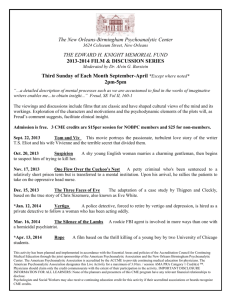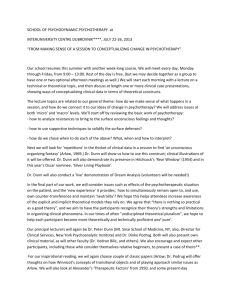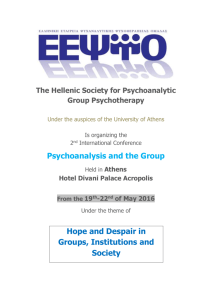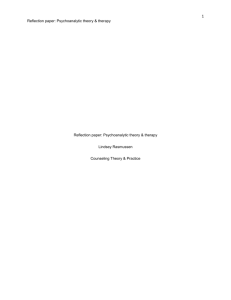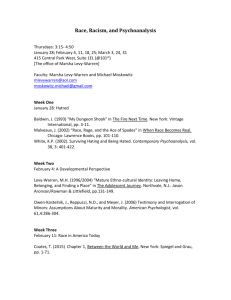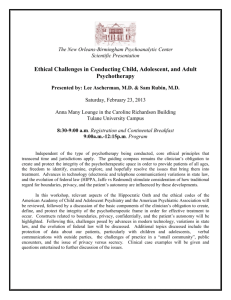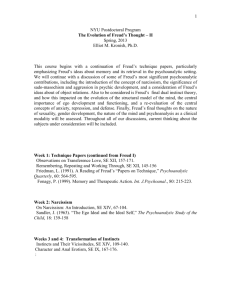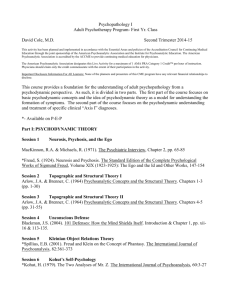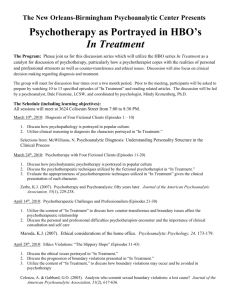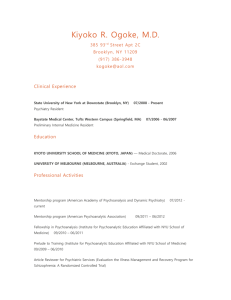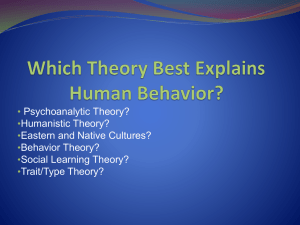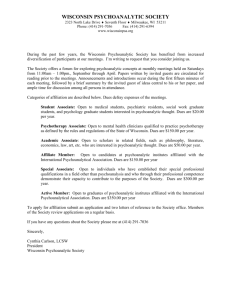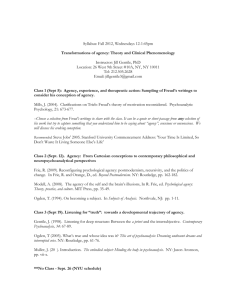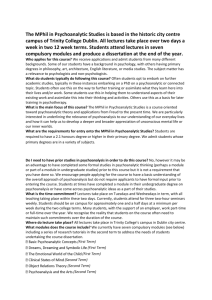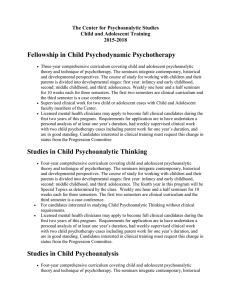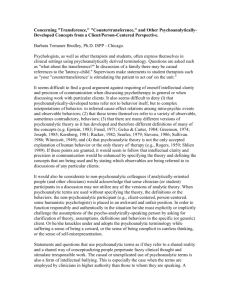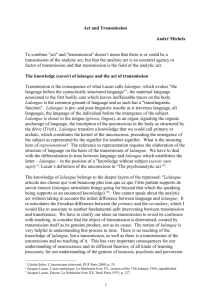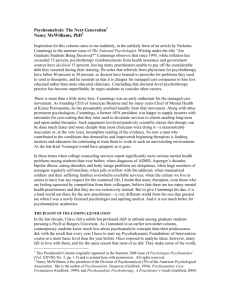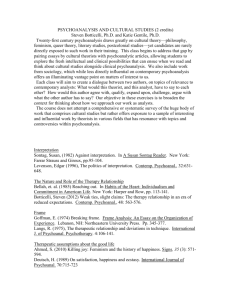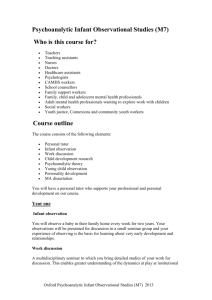Advanced Psychodynamic Theory
advertisement
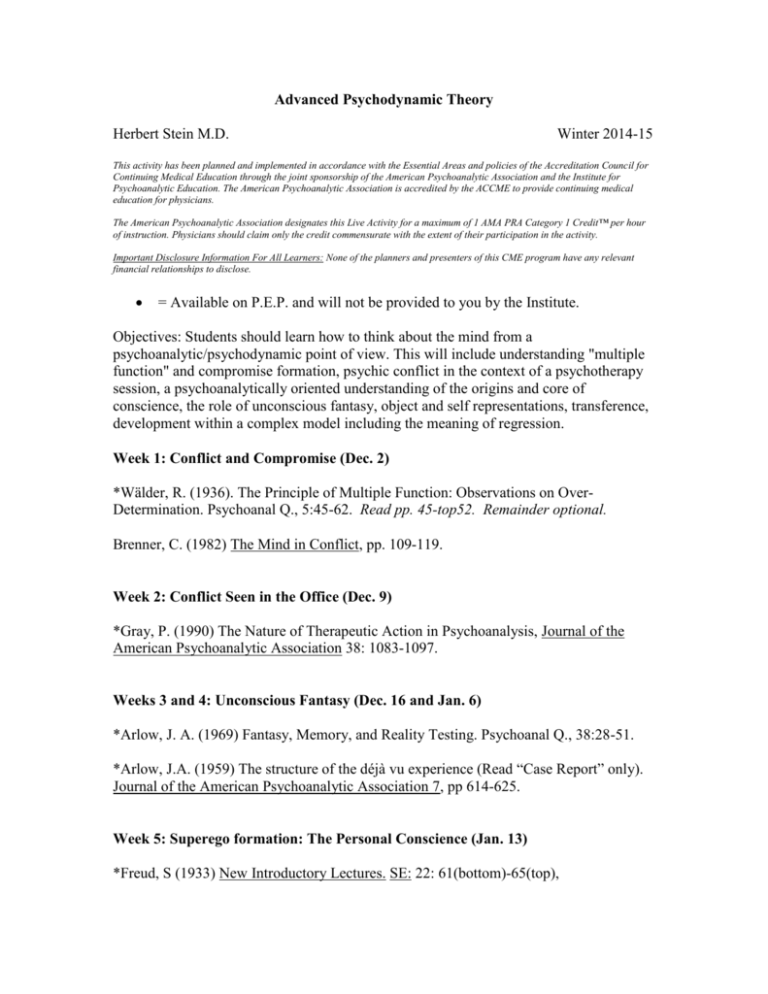
Advanced Psychodynamic Theory Herbert Stein M.D. Winter 2014-15 This activity has been planned and implemented in accordance with the Essential Areas and policies of the Accreditation Council for Continuing Medical Education through the joint sponsorship of the American Psychoanalytic Association and the Institute for Psychoanalytic Education. The American Psychoanalytic Association is accredited by the ACCME to provide continuing medical education for physicians. The American Psychoanalytic Association designates this Live Activity for a maximum of 1 AMA PRA Category 1 Credit™ per hour of instruction. Physicians should claim only the credit commensurate with the extent of their participation in the activity. Important Disclosure Information For All Learners: None of the planners and presenters of this CME program have any relevant financial relationships to disclose. = Available on P.E.P. and will not be provided to you by the Institute. Objectives: Students should learn how to think about the mind from a psychoanalytic/psychodynamic point of view. This will include understanding "multiple function" and compromise formation, psychic conflict in the context of a psychotherapy session, a psychoanalytically oriented understanding of the origins and core of conscience, the role of unconscious fantasy, object and self representations, transference, development within a complex model including the meaning of regression. Week 1: Conflict and Compromise (Dec. 2) *Wälder, R. (1936). The Principle of Multiple Function: Observations on OverDetermination. Psychoanal Q., 5:45-62. Read pp. 45-top52. Remainder optional. Brenner, C. (1982) The Mind in Conflict, pp. 109-119. Week 2: Conflict Seen in the Office (Dec. 9) *Gray, P. (1990) The Nature of Therapeutic Action in Psychoanalysis, Journal of the American Psychoanalytic Association 38: 1083-1097. Weeks 3 and 4: Unconscious Fantasy (Dec. 16 and Jan. 6) *Arlow, J. A. (1969) Fantasy, Memory, and Reality Testing. Psychoanal Q., 38:28-51. *Arlow, J.A. (1959) The structure of the déjà vu experience (Read “Case Report” only). Journal of the American Psychoanalytic Association 7, pp 614-625. Week 5: Superego formation: The Personal Conscience (Jan. 13) *Freud, S (1933) New Introductory Lectures. SE: 22: 61(bottom)-65(top), Sandler, J; Holder, A; Dare, C; and Dreher, A (1997). Freud’s Models of the Mind. Madison: International Universities Press, pp 172-177 Week 6: Mental Representations: Self and Object Representations (Jan. 20) *Sandler, J. & Rosenblatt, J. (1962) The concept of the representational world. Psychoanalytic Study of the Child 17:128-145. Read bottom p129-bottom p 136. Remainder optional Week 7: Transference (Jan. 27) Eichler, Seth (2010) Beginnings in Psychotherapy. Pp. 19-21 (transference and countertransference) * Blum, H.P. (1982). The Transference in Psychoanalysis and in Psychotherapy: Points of View Pas... Ann. Psychoanal., 10:117-137. Week 8 Development of the Adult Mind (Feb. 3) Freud’s original (sexual) model of Development *Freud, S. (1908) Three Essays on Sexuality. SE 7: 183 to top 199. Modern (complex) model of Development Skim Tyson, P and Tyson, R. “Development” in Psychoanalysis: The Major Concepts ed. Moore, B. and Fine, B. pp. 401-414 Skim: don’t need to know in detail Week 9: Regression (Feb. 10) Arlow, J.A. and Brenner, C. Psychoanalytic Concepts and the Structural Theory. Pp. 7183. Eichler, Seth (2010) Beginnings in Psychotherapy. Pp. 17-top 19. Week 10: Overview (Feb. 24) *Brenner, C. (2002) Conflict, compromise formation, and structural theory. The Psychoanalytic Quarterly 71:3, pp 397-418.
